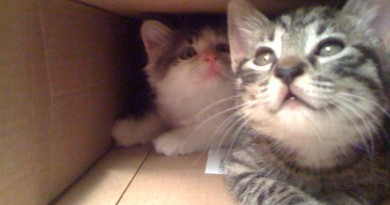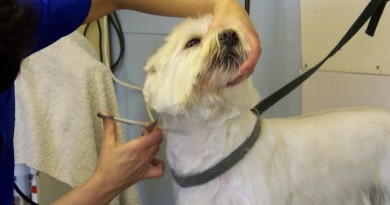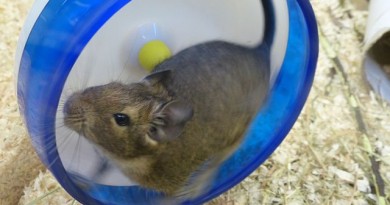Cost Of Declawing A Cat
The cost of cat declawing varies greatly depending on the declawing procedure used, the clinic it is done in, where the cat owner lives, and the age of the cat. The cost of declawing a cat ranges from $40-$450. On top of the cost of the declawing surgery, owners will also have to pay for the cat to have a check up from the veterinarian prior to the surgery and any pain medication the cat may need. In addition, the cost to declaw a cat will increase if the cat has to stay overnight at the veterinarian clinic.
There are three different types of declawing methods commonly used by veterinarians: onychectomy, disarticulation and laser declawing surgery. The cat declawing cost using the onychectomy method is $40-$200; it is the least expensive way of getting a cat declawed. The onychectomy method is also called Resco clipper or nail clipper onychectomy. The disarticulation declawing method is also called scalpel disarticulation. The cost of cat declawing using the disarticulation method is $200-$300. The most expensive way of getting a cat declawed is laser onychectomy or laser declawing surgery. Cat declawing cost using laser declawing surgery is $250-$450. Laser onychectomy is the most expensive way to get a cat declawed; however, as it is causes minimal bleeding and less pain to the cat, it often requires less post-surgery costs than the other two methods.
Average Cost Of Declawing A Cat
The average cost of declawing a cat is around $200. However, average cat declawing cost varies greatly depending on location, veterinarian clinic and what declawing procedure is used. The average cost of declawing a cat using the onychectomy method is about $100, while the average cost of cat declawing using the disarticulation declawing method is around $200. Laser declawing surgery is the most expensive form of declawing; the average cat declawing cost using laser onychectomy is around $350. In addition to the cost of the actual declawing surgery, cat owners will have to pay for things like a pre-surgery check up, pre-surgery blood tests, pain medication and possibly overnight boarding at the veterinarian clinic for the cat. The average cost of a pre-surgery check up is around $30, while the average price of pre-surgery blood tests is about $40. The average cost of pain medication for cats after declawing surgery is around $40 and if the cat needs to stay overnight cat owners will usually pay an additional $10-$20 on top of the cat declawing cost. The average cost of declawing a cat with everything included is around $300.
Cost Of Declawing A Kitten
Declawing kittens is slightly less expensive than the cost of declawing an adult cat. Declawing a kitten costs less than declawing adult cats cost due to kittens requiring less anesthesia than adult cats and kittens recovering from the surgery faster and requiring less post-surgery care. The cost of declawing a kitten is often less when the declawing is done at the same time that they are neutered or spayed. The average cost of declawing a kitten is around $150; however, cat declawing cost varies depending on location, the veterinarian clinic and what declawing procedure is used.
Laser Cat Declawing Cost
Laser declawing for cats is a relatively new declawing technique and is not available at all veterinarian clinics. Laser declawing for cats tends to be the most expensive declawing technique. Laser declawing for cats is more expensive due to the cost of the laser equipment and the extra training the veterinarian requires to use the laser surgery equipment. The average cost of declawing a cat using laser declawing is about $50-$150 more than the more common declawing methods. The average cost of cat declawing using the laser declawing surgery is around $350; however, the cost of laser declawing surgery can be as low as $250 or as high as $450. Pricing for laser declawing for cats varies depending on location and veterinarian clinic.
Declawing Cats Pros And Cons
There are many pros and cons to declawing a cat. The pros to declawing a cat are that the cat will not ruin furniture and carpeting when scratching, will not be able to scratch and possibly hurt children and other pets, and eliminates the sometimes difficult task of trimming the cat’s nails. Getting a cat declawed is sometimes necessary to protect an owner who has a serious disease, a severely weakened immune system or for people on blood thinners. In addition, cat declawing is sometimes done for the cat’s well being to remove a damaged nail that is beyond repair or to remove a tumor. Many countries that have banned cat declawing, allow it when it is necessary to ensure the cat’s or owner’s good health.
The cons of declawing a cat are that cat declawing is moderately expensive, causes the cat moderate to severe pain and possible infection, and may cause serious health problems such as arthritis and lameness. Like any surgery that requires the use of anesthesia, there is the risk of the cat dying during the surgery. Cats that are declawed are unable to defend themselves and should never be allowed outdoors. Cat declawing may cause behavioral changes in the cat, and may cause an increase in biting and litter box use problems.
Cat Declawing Age
It is highly recommended that cats be declawed before they are six months of age; around 4 months old is the ideal age. Declawing older cats is often more costly than declawing kittens, as older cats require more anesthesia than kittens, and the declawing surgery is often more difficult and time consuming. Declawing older cats is often more costly than declawing kittens due to older cats taking longer to heal and needing more post-surgery care and pain medication. In addition, most veterinarians insist that older cats have blood work done before the declawing surgery to ensure that they are in good enough health for the surgery; blood work is usually not mandatory for kittens. The average cost of blood work for cats is around $40-$50. Due to the possible complications and the extended recovery time when declawing older cats, many veterinarians will not declaw a cat over 5-6 years old unless there is a serious medical reason for it. The average cost of declawing older cats is $50-$150 more than the average cost of declawing a kitten.
Cat Declawing Recovery
Cat declawing recovery usually takes 7-10 days; however, kittens tend to heal a bit faster, while older or overweight cats may take slightly longer. While a cat is recovering from declawing surgery, owners will need to take extra special care of them. After declawing most cats experience severe pain, may have difficulties walking and need to be carefully monitored to ensure that their feet do not become infected. Owners that use a clay litter will need to change the cat’s litter for the duration of the cat’s declawing recovery time; clay litters can cause infection and pain. A shredded newspaper or pellet litter should be used. A cat’s activity level should be restricted during the recovery period, especially jumping, as it can aggravate the surgery site and can cause bleeding and increased recovery time. During the recovery time, especially the first few days, the cat will need pain medication; the average cost of pain medication for cat declawing recovery is around $40. Some cats will also need antibiotics; this will cost owners an additional $20-$40. Cat owners should contact their veterinarian if the cat’s feet start to bleed frequently or profusely, if the cat is having difficulties walking a day after the surgery or if the cat shows any sign of serious distress.
Cat Declawing Alternatives
There are several cat declawing alternatives for those who would prefer not to have their cat declawed. Cat declawing alternatives range from training the cat to use a scratching post, trimming the cat’s claws regularly, putting “Soft Claws” on the cat’s claws, or spraying important furniture and carpeting with a deterrent spray.
The most inexpensive cat declawing alternative is simply training the cat not to scratch furniture and carpeting. Owner’s can do this by purchasing a deterrent spray to put on the carpet and furniture and giving the cat an acceptable scratching alternative like a scratching post. The average cost of a repellent spray is around $10, while the cost of a scratching post can be anywhere from $10-$200 depending on its size and design. The biggest cost of training a cat not to scratch furniture is time.
Trimming a cat’s nails regularly is an excellent cat declawing alternative. Nail clippers and nail grinders cost $5-$40. A groomer or veterinarian can also trim a cat’s claws; the average cost of nail trimming by a pet groomer or veterinarian is $10-$20.
“Soft Claws” are vinyl nail caps that owners glue to their cat’s nails so that they do no damage when they scratch. The cost of “Soft Claws” for cats is $18.95 a pack. One package of “Soft Claws” lasts 4-6 months.
- 605SHARES






